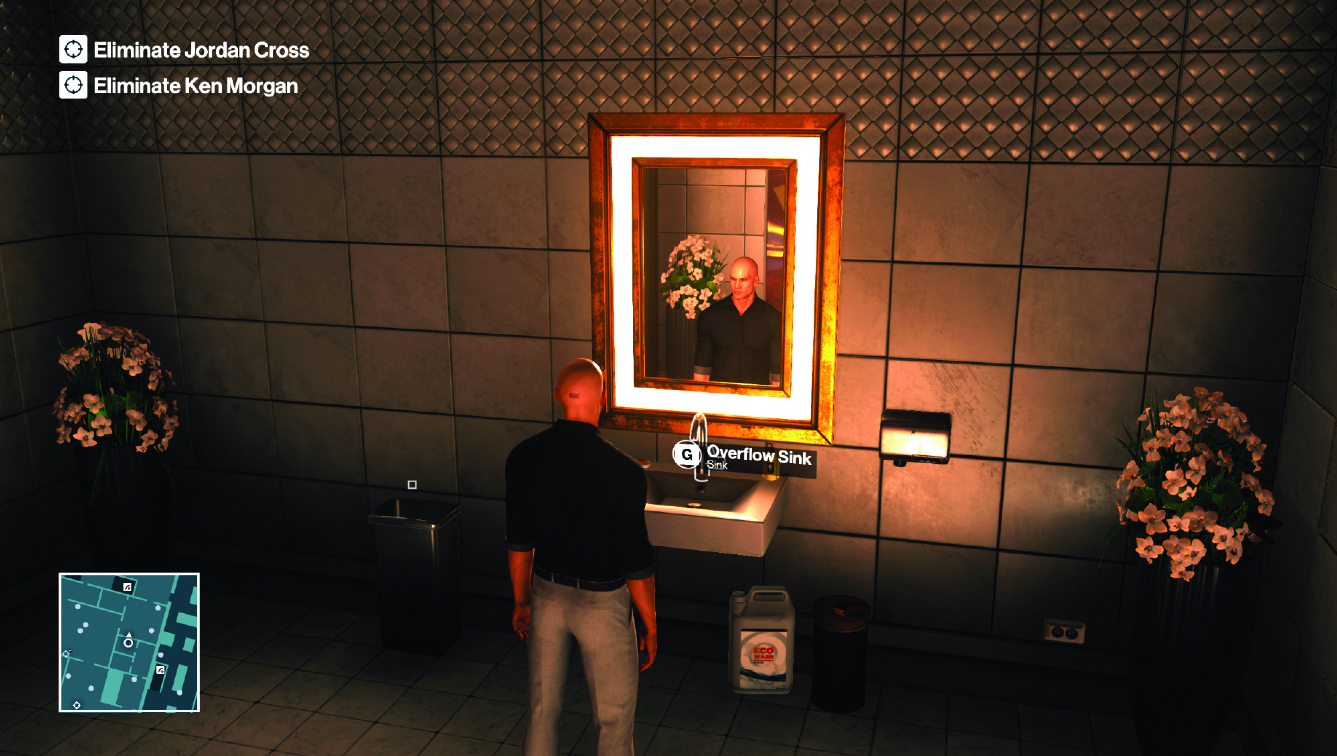Why I love turning objects on in games
An unremarkable action in real life, yet oddly compelling when done in-game.


In Why I Love, PC Gamer writers pick an aspect of PC gaming that they love and write about why it's brilliant. This week Andy gets turned on.
In the original Half-Life, as Gordon Freeman makes his way to work on that fateful day in the Black Mesa Research Facility, you find a break room. A scientist sits at a table drinking from a coffee cup, and another paces the room. Then you see it. A microwave with a container of some unidentifiable food within, begging to be interacted with. There’s no button prompt on the screen telling you to do so, but you just know that if you press the use key next to it something will happen. Something incredible. Something messy.
So you press it, and it beeps. Nothing. You press it again, and this time it beeps at a slightly higher pitch. A clue that you should keep pulling this thread, even though it looks like nothing is going to happen. So you hammer the use key until, suddenly, the dish explodes. The microwave is covered in yellow gunk and the pacing scientist rushes over. “My God!” he exclaims. “What are you doing?” He sadly observes the mess you’ve made, but Freeman says nothing. You walk away, no apology, no remorse. Classic Gordon.

Valve knows what we’re like. If we see something, we’re going to try and interact with it. Doubly so if it looks like it was never meant to be interacted with, or if it’s out of reach. And it’s great that games like Half-Life reward this very human curiosity. There are few things in videogames more satisfying than hitting the use key next to some prop, and something happening in response. When it doesn’t, it’s always a disappointment. It makes the game world feel somehow more lifeless, more artificial. Like you’re in some kind of cardboard film set rather than a real place. If I ever move near a hand dryer in a videogame bathroom and it doesn’t roar into life, my immersion shatters into a thousand twinkling pieces.
I feel for the developers, though. They have to dedicate time and resources to modelling, texturing, animating, and creating sound effects for the most mundane objects. But it’s work that’s always appreciated. In the latest Deus Ex game, Mankind Divided, Adam Jensen’s apartment is a funhouse of stuff to switch on and mess with, from the flushing toilet to the washer and dryer that start rumbling when you power them on. Eidos Montreal didn’t have to do any of this stuff, but it makes all the difference that they did.
Flushing toilets, incidentally, have become the go-to test of a game’s interactivity. There are even websites cataloguing all the games that feature them. Because it’s the internet, and of course there are. Be honest: the first time you encounter a toilet in a game, you try to flush it. You probably even do it without thinking, instinctively hitting the use button when you’re near one. And if nothing happens, and you don’t hear that familiar rush of water, you wonder if the game’s even worth your precious time.

In the years since Half-Life was released, the exploding microwave is still perhaps the best example of this kind of interaction. But there are others. Human Head’s 2006 shooter Prey opens in a brilliantly interactive bar, boasting a TV with channels you can switch, playable gambling and arcade machines, and a jukebox with tracks by Judas Priest, Blue Oyster Cult and other classic rock groups. It’s completely unnecessary, and doesn’t reflect the rest of the game, but it speaks volumes that people still mention it now. In fact, I can’t really remember anything about Prey except the bar scene.
Some games even make a feature out of switching things on. In Hitman, turning a radio on or getting a sink to overflow is a frequently invaluable way to lure a guard away from his post. But often you need a certain item to turn said thing on, such as a wrench or a screwdriver. IO Interactive has cleverly looked at how people love interacting with objects in games and designed a system around it.
Keep up to date with the most important stories and the best deals, as picked by the PC Gamer team.
Environment artists are doing incredible work these days, giving you increasingly detailed, atmospheric worlds to exist in. But no matter how complex the geometry is, how high-res the textures are, and how gorgeous the skybox is, it won’t matter if we approach that toilet, press the use key, and it doesn’t flush. As games get more expensive to develop and assets get more time—consuming to make, I hope developers never forget that, above all, people just love turning things on. The toilet must always flush.
If it’s set in space, Andy will probably write about it. He loves sci-fi, adventure games, taking screenshots, Twin Peaks, weird sims, Alien: Isolation, and anything with a good story.


